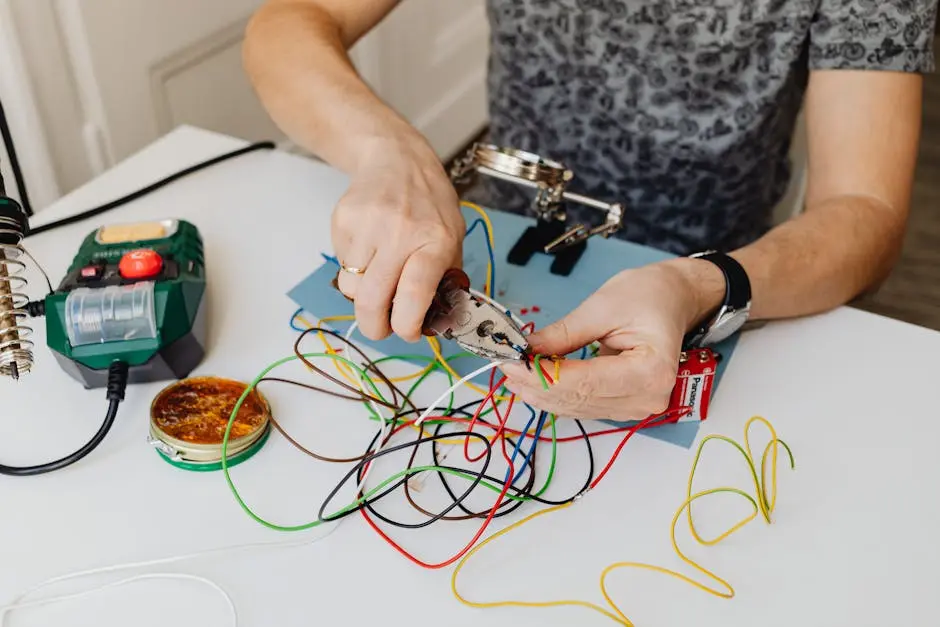
8 Common Mistakes to Avoid When Using Ring Terminals
Share
Ring terminals are a crucial component for secure electrical connections, yet their simplicity can often lead to overlooked errors. This guide will walk you through some common mistakes and how to avoid them, ensuring your projects are always safe and reliable.
1. Choosing the Wrong Size Terminal
Using the correct size of ring terminal is essential for a snug fit and proper function. Make sure to match the terminal size to the wire gauge and stud size, as mismatched sizes can lead to ineffective connections and potential safety hazards. For example, a terminal that’s too large for the wire may not crimp properly, resulting in a loose fit. On the other hand, a terminal that’s too small may not accommodate the wire, causing stress and eventual failure. Accurate sizing is foundational to successful electrical connections.
A common mistake is underestimating the importance of size compatibility. If you’re new to using ring terminals, it can be easy to assume that close enough is good enough. Unfortunately, this can lead to inefficient systems and even dangerous malfunctions. Properly selecting the terminal begins with understanding the specifications of your electrical components. By referring to reliable guides on terminal comparisons, you can ensure your electrical system functions effectively right from the start.
2. Ignoring Material Compatibility
Selecting a ring terminal material incompatible with the wire material can lead to corrosion, a common oversight with long-term consequences. Dissimilar metals can react over time, leading to oxidation that degrades the electrical connection. This is especially relevant in environments prone to moisture or chemical exposure, amplifying the risk of corrosion. Matching materials isn’t just about prevention; it’s about ensuring longevity and reliability. Always check compatibility charts and consider where and how your electrical components will be used.
3. Improper Crimping Techniques
Crimping is key for a stable connection. Using the appropriate crimping tool and technique is vital to avoid a weak connection that might fail over time. A poorly executed crimp could result in a partial connection, which can cause the wire to loosen under stress or environmental factors like vibration or thermal shifts. Investing in a quality crimping tool and learning the proper technique—like ensuring the wire and terminal are correctly aligned before crimping—can prevent many common pitfalls. Proper tools and skills are as critical as the components themselves in an electrical setup.
One aspect often overlooked is the type of crimping required for different terminals. Not all terminals are created equal, and even those that appear similar can require vastly different approaches to crimping. Some might need a simple single crimp, while others could require double crimping for added security. By understanding the demands of your specific project, and considering expert advice like the dos and don’ts for various terminals, you can ensure every crimp is as secure and efficient as possible.
4. Neglecting Wire Insulation
Peeling back too much insulation can lead to exposed wire, increasing the risk of shorts. It’s essential to strip just enough insulation to allow the terminal to make a clean connection without leaving excess wire exposed. Exposed wires are not just a threat under normal conditions; they are especially hazardous in high-stress environments or where moisture is a factor. By carefully managing how much insulation is removed, you’re contributing to a secure and professional finish for your project, along with ensuring the integrity and safety of the electrical system.
5. Overlooking Connection Tension
Ensuring the terminal is tightened properly is important. A loose connection can result in increased resistance and heat build-up, risking damage. Over time, these loose connections might exacerbate mechanical failures, affecting the entire system. To prevent this, it is crucial to use the right screwdriver or tool to tighten the connections adequately without over-torquing them, as this could damage the terminal or the underlying components.
6. Failing to Inspect for Damage
Always inspect terminals for any signs of damage, such as cracks or deformations, before use to prevent faulty connections. Small imperfections or damages can escalate into major failures, especially when exposed to thermal cycling or mechanical vibrations. Regular inspections enhance safety protocols, ensuring each component’s integrity through visual checks and routine maintenance.
7. Ignoring Environmental Conditions
Consider the environment where the terminal will be used. Extreme temperatures or moisture can affect the connection, so choose terminals with suitable protective features. For example, in marine or industrial applications, selecting ring terminals with waterproof or corrosion-resistant properties is wise. Products like heat-shrink terminals offer additional protection, encapsulating the connection and safeguarding it from harsh conditions that could otherwise lead to failure or inefficiency.
8. Inadequate Securement
Ensure that the ring terminal is securely fastened to prevent movement that could loosen the connection and lead to electrical failures. The importance of stability cannot be overstated, as even minor movement or vibration can lead to a connection point weakening over time. Secure placement not only optimizes performance but also extends the life of your electrical system, reducing the need for frequent repairs or replacements.

